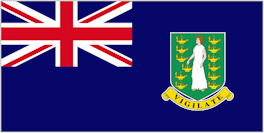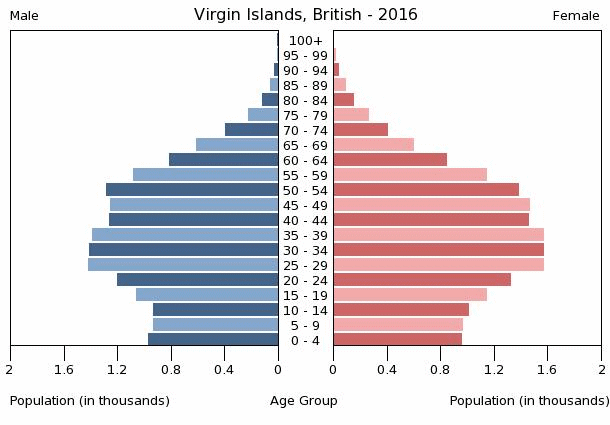British Virgin Islands - People
 There are 16 inhabited islands in The Virgin Islands with a total population estimated at 28,882 [2009]. The census of 1980 showed a population of 12,034. The 1991 census showed a population of 16,115. Tortola is the seat of Government and location of the capital, Road Town. Between 1984 and 1994 the town's population doubled, largely due to migration. Population growth and immigration continue to be rapid.
There are 16 inhabited islands in The Virgin Islands with a total population estimated at 28,882 [2009]. The census of 1980 showed a population of 12,034. The 1991 census showed a population of 16,115. Tortola is the seat of Government and location of the capital, Road Town. Between 1984 and 1994 the town's population doubled, largely due to migration. Population growth and immigration continue to be rapid.
Ethnic groups are black 82%, white 6.8%, mixed 5.9%, East Indian 3%, other 1.6%, unspecified 0.7% (2001 est.). The main religion of The British Virgin Islands is Christianity, the followers of which comprise 84.5% of all religious believers in the country. Christianity is an Abrahamic monotheistic religion based on the life and teachings of Jesus Christ as presented in the New Testament. Christianity is the world's largest religion, with over 2.4 billion adherents, known as Christians. Christians believe that Jesus is the Son of God and the savior of humanity whose coming as Christ or the Messiah was prophesied in the Old Testament. Besides Christianity, there are several other religions present within the country. Other religions in The British Virgin Islands are Islam and folk religions.
Topography and a tourism industry built around the “sun, sand, and sea” concept have greatly influenced patterns of settlement and land use. The most populous communities and the majority of physical development can be found in low-lying coastal areas. The mountainous nature of the islands has also slowed development on a large percentage of the land – in the late 1990s, approximately 73% of Tortola remained undeveloped, for example.
The British Virgin Islands’ 1980 census put the territory’s population at 10,985, nearly evenly split between males (51.1%) and females. Data from the 1991 population census show that the population grew by 5,123, to 16,108. This growth included a natural increase (births minus deaths) of 1,969 and a net immigration of 3,154.
Between 1980 and 1991 foreign workers, sometimes accompanied by their dependents, flocked to the British Virgin Islands, drawn by an increased demand for labor that the local population was unable to meet. This spike in job opportunities was mainly driven by a sharp uptick in activity in the tourism, construction, and financial services sectors. Of the 16,939 persons in the labor force in 2006, 60.6% were foreigners, a figure that rose to 67.8% in 2008, with 19,098 persons employed. The number of foreign workers may well have been higher, given that 14.0% of the employed in 2006 and 8.1% in 2008 did not list their place of birth.
The population increased 82.2% between 1990 and 2010. In that decade, 80% of population growth was due to immigration, with natural growth accounting only for 20%. In 2010, the age and sex structure of the territory’s population (under 30,000 inhabitants) reflected the mixed influence of immigration and natural growth, with a shape like a contracting population: the economically active population (15–64 years old) accounted for 67.2% of the total, while the age group 30–49 years old represented 31.0%.
The groups older than 50 years presented a pyramidal shape, reflecting the aging and lower death rates among the adult population (in relation to 1990). The size of younger age groups decreased (contraction), reflecting the decrease in birth rate in recent decades and the diminished effect of immigration on children and younger population groups.
In 2010, the population under 15 years of age was 25%, while those age 65 and older accounted for 5.97%. Total births increased between 2006 and 2010, with 262 live births in 2006 and 299 in 2010. The crude birth rate increased from 9.78 per 1,000 population in 2006 to 11.18 in 2010. In 2010, overall life expectancy at birth was 80.18 years (78.56 for men and 82.42 years for women). The levels of this indicator were somewhat lower than in 2006 (81.8 years for the overall population, 81.39 years for males, and 83.19 years for females). The total fertility rate presented a slight increase from 1.22 births per woman in 2006 to 1.51 in 2009.

|
NEWSLETTER
|
| Join the GlobalSecurity.org mailing list |
|
|
|

